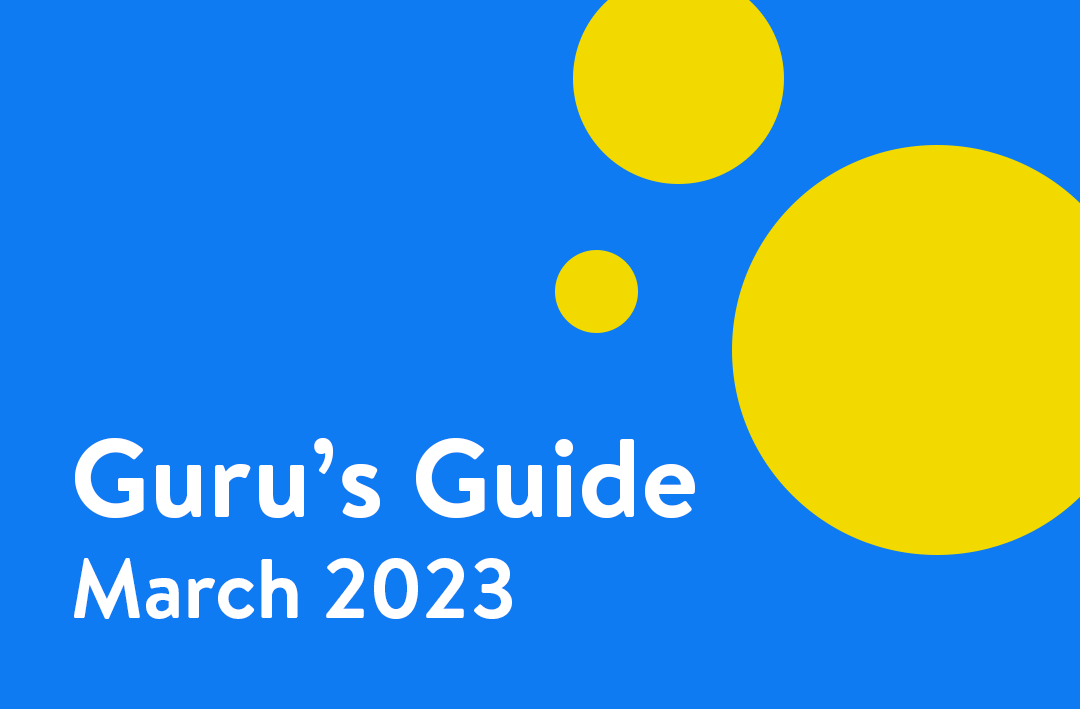Guru’s Guide March


Google Core Algorithm Update – Erika Dias
The search engine results page (SERP) has undergone significant changes over the past year, with many algorithm updates. On March 15th, Google announced another core update that will be rolling out over the next two weeks.
Although it’s too early to assess the impact of this new core algorithm update, we can examine previous updates:
- Product Review Update: This update rewards articles written by people who have personally tested the product they are reviewing. This update values photos and videos, pros and cons of the products, and comparisons of competing products. Unless your site is a product review site, this update would not have affected you.
- Link Spam Update: This update no longer counts links that Google deems spammy, and the authority passed through these links is lost. Only build links from high-quality sites so that, as long as you have a natural backlink profile, this update should not affect your site.
- Helpful Content Update: This update allows Google to detect low-quality content created for search engines and not for users. Focusing on creating high-quality content is key here. If you have well-written content that adds value to the user, you would have seen this algorithm update positively impact your rankings.
Google’s goal with these updates is to provide users with better search results. So, focusing on helping users find the answers or products they are looking for will help to protect your rankings whenever there are algorithm updates.
Video Assets In Performance Max – Paul Rouillon
With the push for Performance Max campaigns in 2022/23, we should encourage the use of new video assets to improve results across lead generation and e-commerce Performance Max campaigns.
Missing video assets in PMAX campaigns can result in poor videos being created using the stock images provided.
Why Should You Add Video to Your PMAX Campaign?
- Adding a video increases your asset coverage, which ensures the greatest possible campaign performance by “feeding the machine” with the right amount (and variety) of creative assets, which:
- Unlocks valuable inventory (more reach)
- Improves machine learning (more efficiency)
- Future-proofs your campaign (more long-term performance)
- If no video is added, PMAX auto-generates videos for you from images and text. Initial testing has proven that client-uploaded videos perform better than the auto-generated versions.
- It’s easy to create a video if you don’t have one – simply use the Video Creation tool in Google Ads (Asset Library > “+” > Video > Create Video).
How Can I Add Video to My PMAX Campaign?
Edit the Asset Groups of your PMAX campaign and, in the video section, select a current video from your asset library, YouTube channel or social channels, or create a new video to add in using the Video Creation tool in Google Ads.
There are several reasons why using videos can be beneficial for performance-maximizing campaigns in Google Ads. Overall, using videos can be a powerful tool to help you maximize performance in your Google Ads campaigns, especially if you want to increase engagement and reach a wider audience.
Facebook’s Culture Rising: 2023 Trends Report – Kas Robinson
The “Culture Rising: 2023 Trends Report” by Facebook’s Business team predicts six cultural trends that will shape consumer behaviour and expectations.
These 6 trends include:
- Exploratory Identities: The way we see ourselves defines how we see and engage with the world.
- Refined Relationships: People’s relationships are the very core (if not the definition) of happiness. While this truth remains eternal, the types, shapes and ways we connect are always in flux.
- Assertive Aspirations: Our hopes, dreams and #goals motivate us to keep on keeping on. Whatever the macroenvironment, it’s really not in our nature to dream smaller.
- Lived Values: When we act on our values, we show others what matters to us. People’s values are evolving, along with the dedication to living them.
By understanding how consumers connect with the platforms, small businesses should leverage these trends to connect with customers and create personalised experiences. If you’re interested to read more of the report, you can read here.
Core Web Vitals and Web development – Anuj Tamarakar
Core Web Vitals are a set of metrics that Google uses to measure and evaluate the user experience of a website.
Website builders should pay attention to Core Web Vitals because they are now part of Google’s algorithm for ranking websites in search results. Websites that perform well on these metrics will likely have a higher chance of ranking higher in search results, which can lead to more traffic and better user engagement.
These metrics are specifically focused on page speed, responsiveness, and visual stability, and they are designed to help website owners and developers create a better user experience for their visitors.
The three Core Web Vitals metrics are:
- Largest Contentful Paint (LCP) – measures loading performance. It looks at the time it takes for the largest piece of content on a web page (such as an image or text block) to become visible to the user.
- First Input Delay (FID) – measures interactivity. It looks at the time it takes for a user to be able to interact with a web page after clicking on a button or link.
- Cumulative Layout Shift (CLS) – measures visual stability. It looks at how much the page layout shifts as it loads and measures the frequency and magnitude of unexpected layout shifts.
Google has identified these three metrics as important because they directly impact the user experience.


